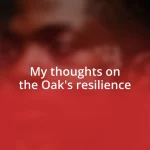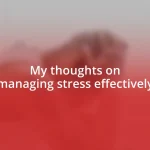Key takeaways:
- Understanding emotional triggers reveals deep-seated insecurities and past experiences, turning discomfort into opportunities for personal growth.
- Identifying and analyzing triggers through journaling and reflection helps in recognizing patterns and managing emotional reactions more effectively.
- Implementing strategies like mindfulness, self-affirmation, and setting boundaries with negative influences fosters healthier responses and enhances emotional well-being.
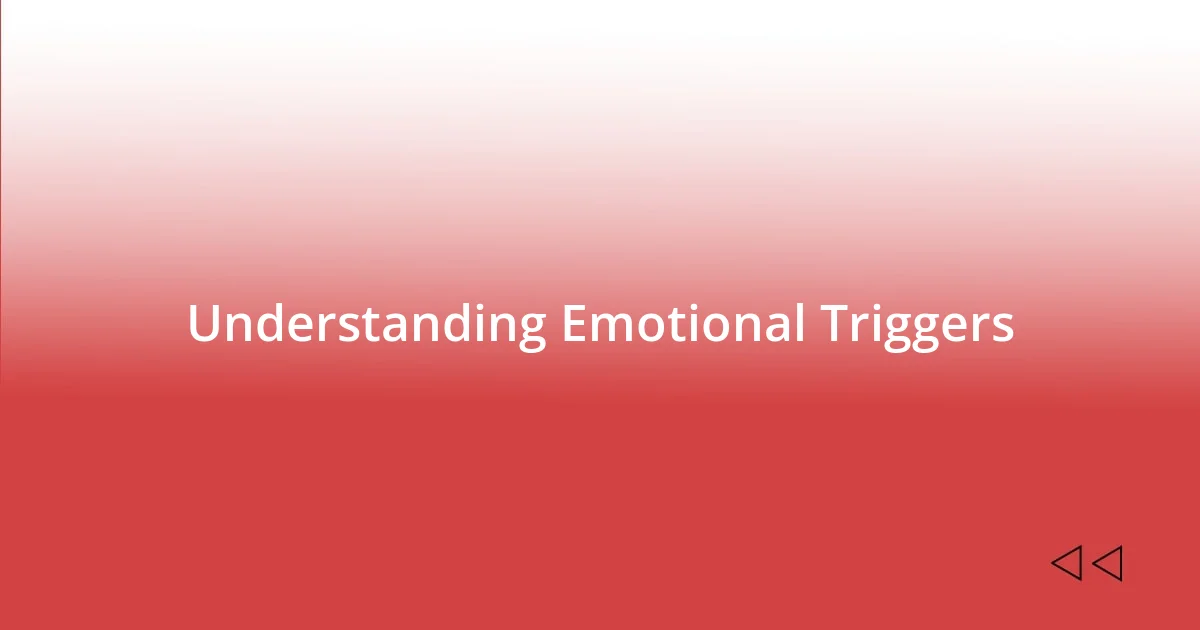
Understanding Emotional Triggers
Understanding emotional triggers can feel like navigating a labyrinth of feelings. I remember a time when a subtle comment from a friend sent me spiraling into doubt. Was it really about their words, or did it tap into something deeper, like my fear of rejection? It’s these moments that reveal how our past experiences shape our reactions.
As I explored my triggers, I realized that they often point to unresolved emotions. For instance, a loud argument might conjure memories of past conflicts that left me feeling powerless. It’s fascinating how seemingly minor situations can unearth such powerful feelings. Wouldn’t you agree that our reactions often say more about us than the situation itself?
Interestingly, understanding these triggers has been a game changer for me. I now see them as opportunities for personal growth rather than just moments of discomfort. When I feel that familiar pang of irritation, I pause and reflect. What past experience is echoing in this moment? Each time, I learn a little more about myself, and somehow, that gives me a sense of empowerment amidst the emotional chaos.
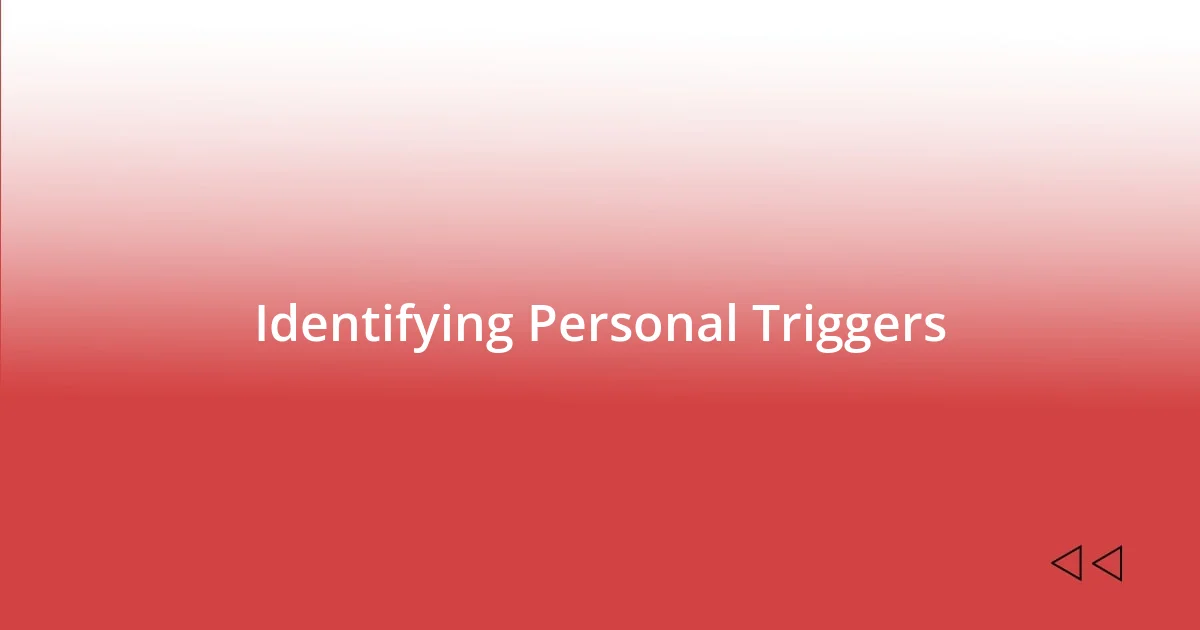
Identifying Personal Triggers
Identifying personal triggers requires a keen awareness of our emotional responses. I recall a specific instance when I felt a wave of anxiety wash over me during a meeting at work. It wasn’t the agenda that rattled me; rather, it was the presence of a colleague whose criticism in the past had left me feeling inadequate. Recognizing this connection was pivotal; it highlighted how our reactions often stem from past experiences rather than the current situation.
As I delved deeper, I noticed patterns emerging in my emotional landscape. For example, certain social settings would leave me feeling drained and irritable, prompting me to reflect on my history of feeling out of place in large groups. This realization showed me that some triggers are rooted in feelings of insecurity that I carry from my younger years. By acknowledging these triggers, I began to disarm their power over me, enabling meaningful conversations with myself about my self-worth and social comfort.
The journey of identifying triggers is ongoing, but I’ve learned to keep a journal of these moments. This practice serves as a gentle reminder of my emotional landscape. It allows me to pause, breathe, and consider why a particular situation stirred emotions within me. By documenting these experiences and connecting them to my past, I can recognize patterns, giving me control over my reactions. It’s like having my own emotional map, guiding me toward understanding and acceptance.
| Observable Trigger | Underlying Emotion |
|---|---|
| Criticism from peers | Fear of inadequacy |
| Social gatherings | Feelings of insecurity |

Analyzing Trigger Patterns in Life
It’s intriguing to analyze what triggers us and how those patterns weave through our daily lives. For example, I’ve noticed that when a friend cancels plans, it triggers feelings of rejection that remind me of a time in school when I felt left out. Each instance pushes me to reflect on why I inflate my emotions in such situations and encourages deeper examination of my self-worth. Understanding these trigger patterns leads to clarity, allowing me to respond more thoughtfully instead of being swept away by emotions.
To uncover the layers behind my triggers, I started mapping them out. Here’s what I found helpful:
- Environmental Cues: Certain places, like a bustling café, can heighten my anxiety due to past overwhelming social experiences.
- Specific People: Interactions with individuals who have previously critiqued me elicit a fear response tied to that history.
- Contextual Situations: Engaging in competitive environments makes me anxious, reminiscent of childhood moments where I felt constantly compared to others.
- Unfulfilled Needs: When I feel ignored, it often taps into my long-standing need for validation, echoing insecurities I thought I’d left behind.
Examining these patterns isn’t just an exercise in introspection; it offers a rich avenue for personal growth. Each moment of discomfort reveals the nuances of my emotional landscape, allowing me to address reactions without judgment. This approach transforms triggers from obstacles into stepping stones for deeper self-awareness and healing.
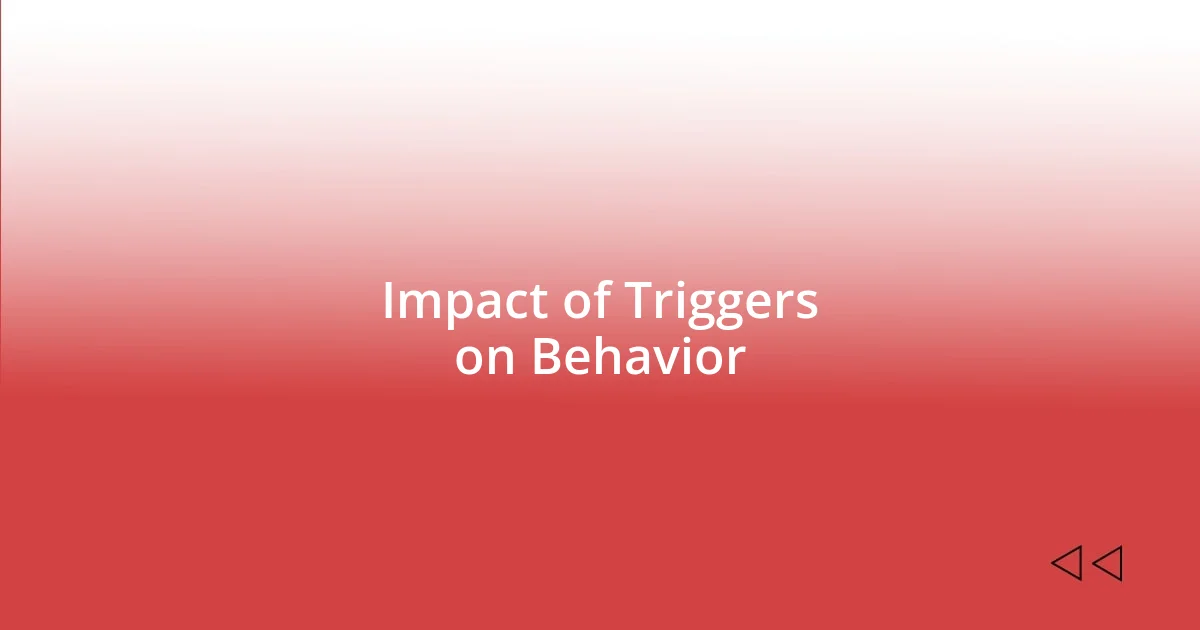
Impact of Triggers on Behavior
Recognizing how triggers influence my behavior has been a transformative experience. For instance, when I’m unexpectedly criticized, my initial reaction often involves defensiveness. I realized that this response wasn’t just about the comment itself, but rather a reflex to a past filled with judgment. Reflecting on these moments allows me to pause and consider, “What am I really feeling here?” That introspection has changed the way I interact with criticism, helping me to respond constructively instead of reactively.
Sometimes, I notice that specific environments can send me spiraling into discomfort. For example, returning to a familiar place where I once faced rejection brings a flood of anxious memories, and I can feel my heart racing. Why does this happen? It’s often linked to a deeper fear of judgment that has clung to me over time. This realization has made me more mindful of my surroundings and the emotional weight they carry, nudging me toward spaces that nurture rather than overwhelm.
I’ve also discovered that the people I spend time with greatly affect my emotional reactions. A friend who trivializes my achievements can unknowingly unlock old wounds associated with feeling inadequate. I often catch myself evaluating my worth based on their feedback. Why do I let their perspective hold so much power? Acknowledging this dynamic has been crucial; it encourages me to surround myself with those who uplift rather than those who inadvertently trigger my insecurities. Each reflection not only reveals my vulnerabilities but also paves the way for healthier interactions that foster growth.

Strategies to Manage Triggers
When it comes to managing my triggers, the first strategy I find invaluable is mindfulness. Practicing mindfulness allows me to pause and assess my emotions without getting lost in them. For instance, during a recent group discussion that triggered my insecurities, I took a moment to breathe deeply and ground myself, which helped me recognize that these feelings were temporary. Have you ever noticed how taking a step back can shift your perspective? This simple practice can create a buffer between my feelings and my reactions, leading to a more constructive response.
Another effective strategy I’ve embraced is using self-affirmation. After confronting a trigger, I consciously remind myself of my strengths and achievements. Just the other day, after receiving a piece of criticism, I took a moment to write down three things I was proud of. This small act changed my focus from fear to empowerment. I often wonder how many of us truly acknowledge our accomplishments on a daily basis. By celebrating even the small victories, I give myself the emotional confidence to face similar situations in the future.
Creating boundaries with certain individuals is also a key strategy I’ve adopted. I remember a time when spending extended periods with a colleague who constantly belittled my ideas left me feeling drained. I had to ask myself, “Is this relationship worth the emotional toll?” Setting boundaries has taught me that it’s okay to limit my exposure to people who don’t cherish my worth. Have you considered how distancing yourself from toxic influences can transform your emotional landscape? By prioritizing connections that celebrate rather than challenge my self-esteem, I nurture a healthier mindset that enables me to deal with triggers more effectively.

Creating a Trigger Action Plan
To create a Trigger Action Plan, I believe it’s essential to identify specific triggers in my daily life first. For example, I once noticed that certain online discussions would consistently upset me, often over topics I felt strongly about. I started documenting these triggers and the associated emotions, leading me to better understand the patterns of my reactions. Have you ever stopped to think about what truly sets you off?
Once I’ve pinpointed my triggers, developing personalized strategies to address them is crucial. I recall a time when I faced significant anxiety before public speaking events. By setting aside time to visualize my success and practice deep breathing techniques beforehand, I transformed my fear into excitement. What small adjustments can you make to turn your responses around?
Finally, setting clear goals within my Trigger Action Plan has helped me stay accountable. For instance, I decided to limit my social media usage after realizing how it often fed my insecurities. Each week, I monitor my emotional responses to ensure that I remain aligned with my goals. How often do you check in with yourself to see if your triggers are still getting the best of you?

Reflecting on Trigger Experiences
Reflecting on trigger experiences has been a journey of self-discovery for me. I vividly recall a time when I felt overwhelmed in social situations, often stemming from past judgments I perceived from others. Each incident became a moment to explore why those feelings arose—was it insecurity, or was it tied to something deeper from my upbringing? I’ve found that diving into these reflections can unveil layers of my emotional landscape, bringing clarity I never knew I needed.
As I revisited specific occurrences, I noticed patterns that repeated over time. For instance, after a particularly distressing conversation with a friend, I realized that I was often triggered by patterns of criticism that mirrored my childhood. This revelation was both jarring and liberating. By acknowledging these connections, I grew more aware of how to navigate future conversations. Have you ever thought about how understanding the root of your triggers can reshape your reactions?
In reflecting, I also learned to embrace vulnerability. There was a moment when I shared a personal struggle with my family, and instead of judgment, I received empathy and support. The weight of that trigger lessened as I realized that by voicing my fears, I could reclaim my power. This was a turning point that made me ponder—how often do we deny ourselves the chance to connect by keeping our triggers silent? By shedding light on my experiences, I could foster deeper, more meaningful relationships while managing my emotional responses more effectively.






